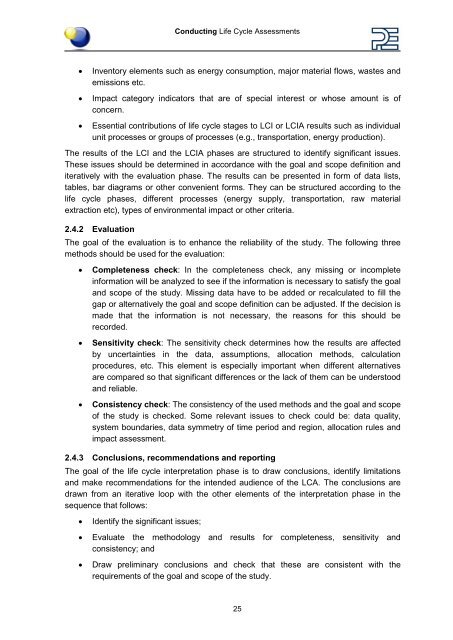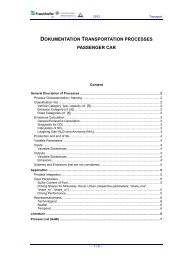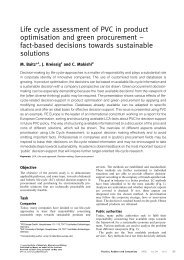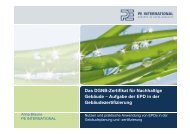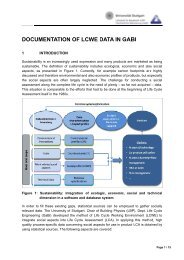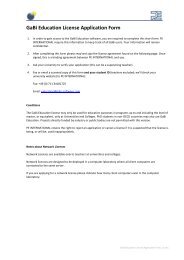Paper_Clip_Tutorial Part1.pdf - GaBi Software
Paper_Clip_Tutorial Part1.pdf - GaBi Software
Paper_Clip_Tutorial Part1.pdf - GaBi Software
Create successful ePaper yourself
Turn your PDF publications into a flip-book with our unique Google optimized e-Paper software.
Conducting Life Cycle Assessments<br />
• Inventory elements such as energy consumption, major material flows, wastes and<br />
emissions etc.<br />
• Impact category indicators that are of special interest or whose amount is of<br />
concern.<br />
• Essential contributions of life cycle stages to LCI or LCIA results such as individual<br />
unit processes or groups of processes (e.g., transportation, energy production).<br />
The results of the LCI and the LCIA phases are structured to identify significant issues.<br />
These issues should be determined in accordance with the goal and scope definition and<br />
iteratively with the evaluation phase. The results can be presented in form of data lists,<br />
tables, bar diagrams or other convenient forms. They can be structured according to the<br />
life cycle phases, different processes (energy supply, transportation, raw material<br />
extraction etc), types of environmental impact or other criteria.<br />
2.4.2 Evaluation<br />
The goal of the evaluation is to enhance the reliability of the study. The following three<br />
methods should be used for the evaluation:<br />
• Completeness check: In the completeness check, any missing or incomplete<br />
information will be analyzed to see if the information is necessary to satisfy the goal<br />
and scope of the study. Missing data have to be added or recalculated to fill the<br />
gap or alternatively the goal and scope definition can be adjusted. If the decision is<br />
made that the information is not necessary, the reasons for this should be<br />
recorded.<br />
• Sensitivity check: The sensitivity check determines how the results are affected<br />
by uncertainties in the data, assumptions, allocation methods, calculation<br />
procedures, etc. This element is especially important when different alternatives<br />
are compared so that significant differences or the lack of them can be understood<br />
and reliable.<br />
• Consistency check: The consistency of the used methods and the goal and scope<br />
of the study is checked. Some relevant issues to check could be: data quality,<br />
system boundaries, data symmetry of time period and region, allocation rules and<br />
impact assessment.<br />
2.4.3 Conclusions, recommendations and reporting<br />
The goal of the life cycle interpretation phase is to draw conclusions, identify limitations<br />
and make recommendations for the intended audience of the LCA. The conclusions are<br />
drawn from an iterative loop with the other elements of the interpretation phase in the<br />
sequence that follows:<br />
• Identify the significant issues;<br />
• Evaluate the methodology and results for completeness, sensitivity and<br />
consistency; and<br />
• Draw preliminary conclusions and check that these are consistent with the<br />
requirements of the goal and scope of the study.<br />
25


